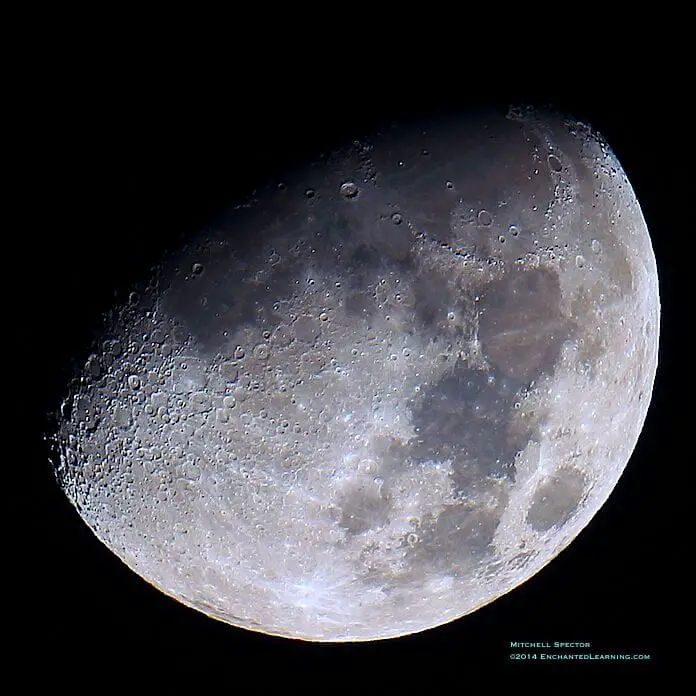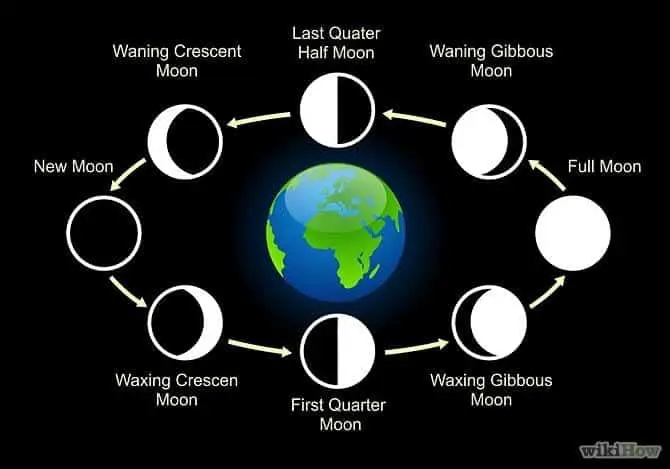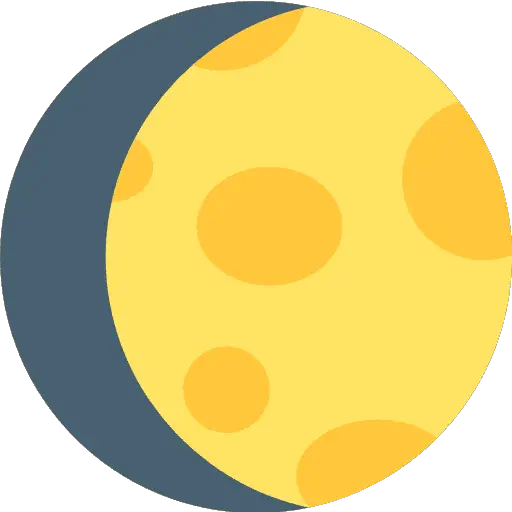What Is A Waxing Gibbous Moon?
Waxing Gibbous Moon always occurs when the moon’s lunar surface is more than half-lit or illuminated. A gibbous moon phase occurs just after the first quarter moon phase.
In fact, This gibbous moon is generally visible after the 7th day (First Quarter Moon) till the 14th-day (Full Moon) of the Luna Month.
Highly recommended, Full Moon Calendar 2021 (Dates, Names & Moon Sign – Southern Hemisphere)
What Is A Waxing Moon?
A Waxing Moon means that the lunar shape is getting bigger i.e waxes. As our natural satellite i.e moon revolves around the Earth, with each passing day; the lunar surface gets more and more illuminated by the Sun.

Hence, as a result, the surface of the moon waxes. Well, there are two different types of Waxing Moon. These are waxing crescent moon and waxing gibbous moon.
But in this article, we are only interested in the Gibbous Moon Phase. A Gibbous Moon phase is larger than the semi-circle (first quarter moon) but smaller than the full circle (Full Moon).
Highly recommended, Full Moon Calendar 2021 (Dates, Names & Moon Sign – Northern Hemisphere)
What Does A Waxing Gibbous Moon Look Like?

As I said earlier, A waxing moon occurs just after the first quarter moon. At the first quarter moon phase, the moon is exactly at a 90-degree angle with the Sun, as seen from the Earth (see above picture).
Once the moon’s lunar surface angle or moon angle exceeds 90 degrees, the Waxing Gibbous Moon phase occurs till the time it reaches 180 degrees i.e Full Moon.
When the surface of the moon is more than 50 % (first quarter moon) and less than 100 % (full moon) illuminated; a Waxing Moon Occurs. In other words, this phase of the moon occurs between First Quarter Moon Phase and Full Moon Phase.
Recommended, Indeed, Moon Is Moving Away From Earth, But WHY???
Waxing Gibbous Moon – The Secondary Phase Of The Moon
The moon revolves around the Earth in approximately 29.62 days, a period is known as a synodic month or lunar month. Due to its revolution around the earth, the moon takes different shapes. The different shapes of the moon are called phases of the moon.
Well, in total, there are 8 phases of the moon which can be further divided into two Subcategories. These are the primary phases of the moon and secondary phases of the moon. In fact, all the secondary moon phases come between the primary phases of the moon. See the above picture to clarify.
Take a look at, First Full Moon in October 2020: Harvest Moon or Hunter’s Moon?
The new moon, first quarter, full moon, and last quarter moon comes in the category of Primary phases of the moon. On the other hand, a Gibbous Moon is one of the secondary phases of the moon. The other secondary phases of the moon are Waxing Crescent, Waning Crescent, and, Waning Gibbous Moon.
If I talk in a hierarchical order, I mean without bifurcating the 8 phases of the moon. The fourth phase of the moon is a waxing gibbous moon.
Waxing Gibbous Moon In The Afternoon
Sometimes Gibbous Moon is visible in the daytime or afternoon because, during Waxing Gibbous Moon Phase, the moon’s lunar surface receives a large amount of sunlight. For this reason, we can easily see Gibbous Moon In the daytime.
Highly Recommended, Hence, That’s How Was The Moon Formed
Well, frankly speaking; to date, I haven’t observed the gibbous moon in daylight. I mean, maybe I haven’t noticed it well enough. What about you? Did you?
That’s it for this post. If you like this article, share it if you like it, like it if you share it. You can also find us on Mix, Twitter, Pinterest, and Facebook.
